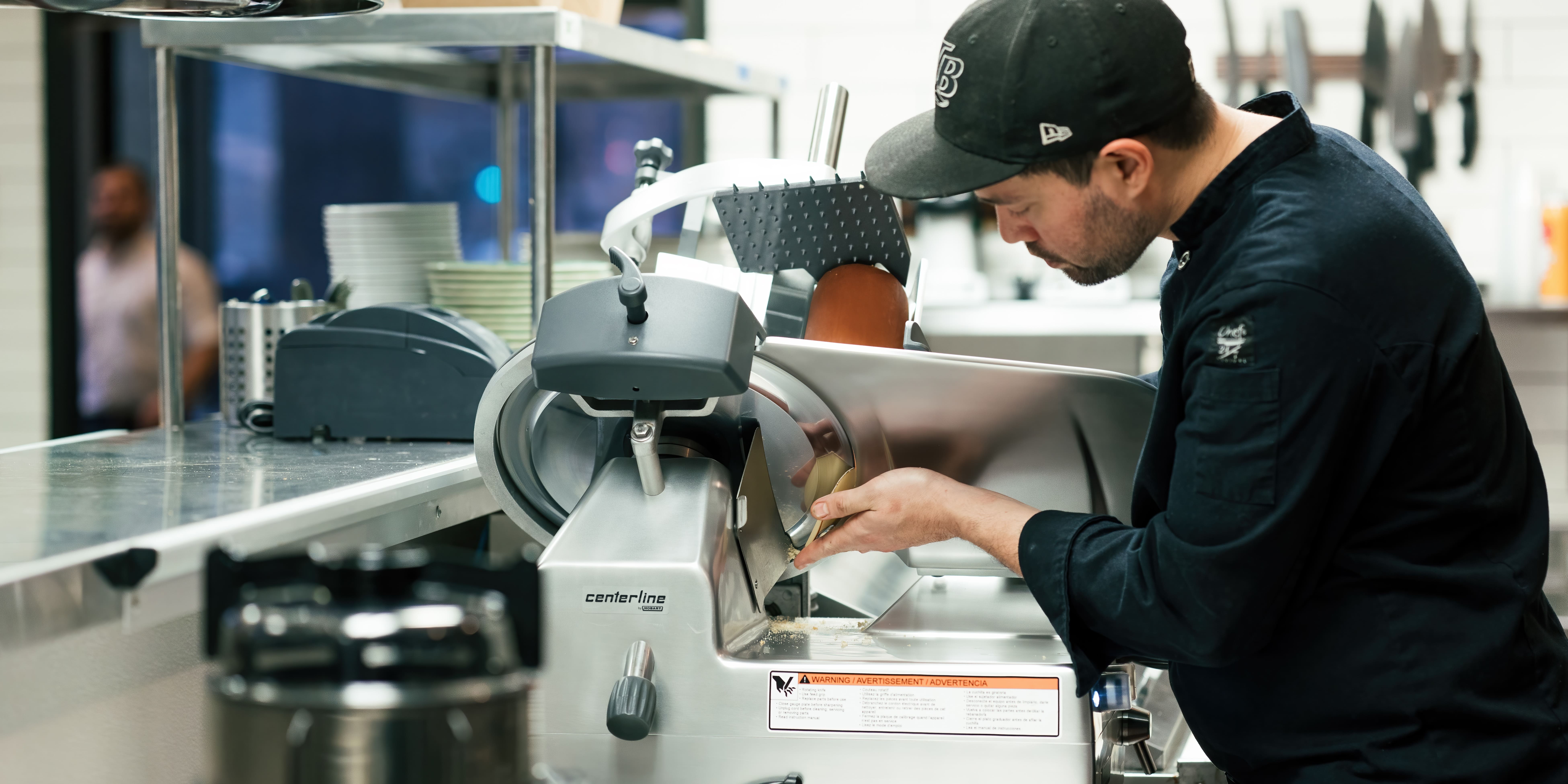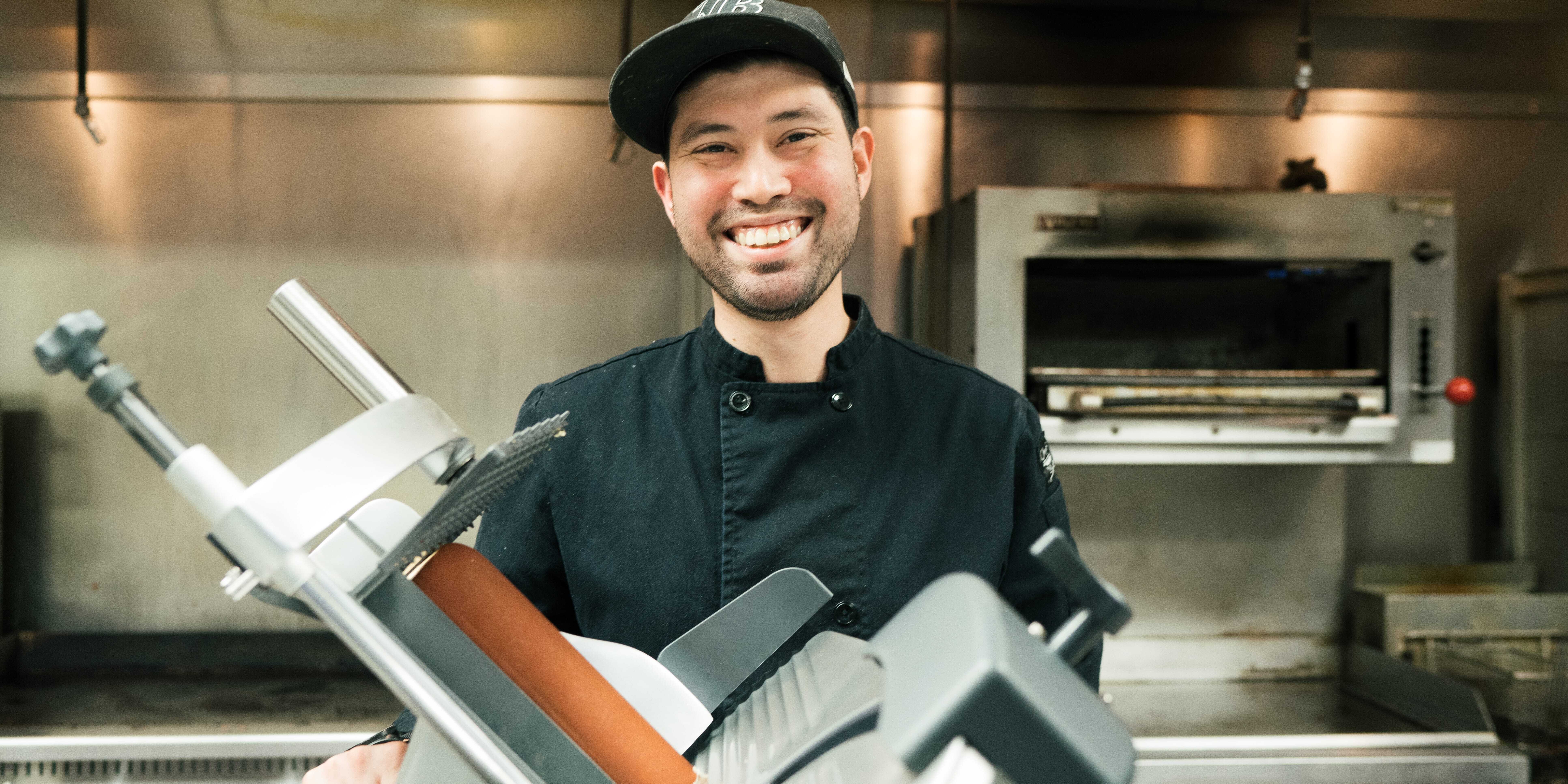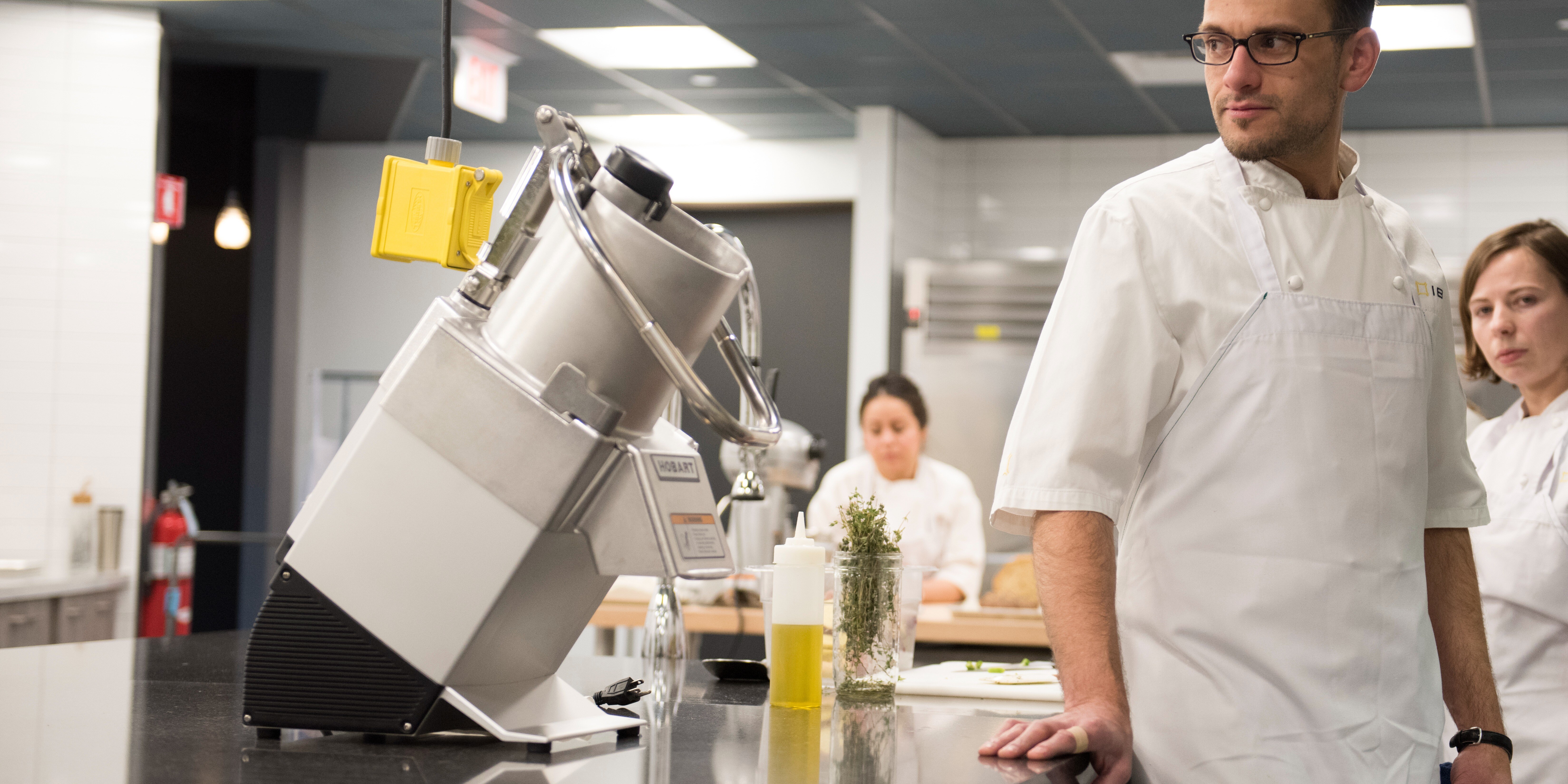Whether you’re mixing dough for artisan breads, chopping fruits or vegetables, or mixing up a purée, the right food processor can help you put personal touches on your recipe. When you want to experiment with textures and flavors, you need a machine that will process it. Even in a kitchen with the nicest oven or stove, your creation can fall flat without the proper preparation.
In bakeries, patisseries and confectioners’ kitchens small and large, choosing the right food processor lets you experiment with fresh ingredient combinations — while also saving time and improving the look and quality of the finished product. So how do you know which food processor is the best fit? Consider the capabilities and advantages of these common types of food processors.
The Value of the Right Equipment
First consider what you need to do in your kitchen. Do you have a lot of ingredient prep in the form of chopping or slicing? Do you need a bowl-style processor that works well for sauces and purées? Is it important to have equipment that can quickly process a high volume? These are some questions to determine which food processor will best meet your needs. A food processor lets you take a fresh, creative approach to baking — experimenting with combining seeds, fruits, herbs, chocolates, spices and many other in-season ingredients and high-quality raw materials. In addition, the right food processor helps save time, especially in high-volume applications. Preparing hundreds of zucchinis by hand for bread can take hours — work that can be completed in minutes by a food processor. This also maximizes the labor resources available in a kitchen.And not only does the work get done faster, but the output is also much more consistent when it’s done with a food processor — resulting in better visual presentation and a higher quality finished product.Flexibility may be another priority in choosing the right food processor. Certain types of food processors offer the versatility to complete many tasks, since you might be slicing, grating and shredding one minute and mixing and kneading the next.
Continuous-Feed Food Processors
A continuous-feed food processor can consistently slice, dice, grate or shred many ingredients — from nuts and vegetables to cheese — so you can easily experiment. This type of machine is well-suited for jobs that require prepping ingredients in volume, so you can tackle that mountain of vegetables in no time. Quickly and easily slice strawberries for pastry, cut thin apple slices for a tarte or grate carrots for carrot cake. Because continuous feed food processors can take a bit longer to clean, they typically aren’t the best option for low-volume preparation needs. But in jobs that require processing larger volumes, continuous-feed food processors offer significant time savings. Some machines are designed for optimal cutting performance, which helps maintain nutritional value by preventing liquid from being pressed out during processing. This also contributes to a higher quality finished product. Look for a model with heavy-duty metal construction, which is more durable than plastic for the demands of continuous-feed food processing. Also, be sure to choose a model with an assortment of high-quality cutting tool options, which last longer and offer greater versatility to do more jobs.
Bowl-Style Food Processors
A compact, counter-top bowl-style food processor can chop, mince, mix and emulsify. You can whip up aromatic butter, chop nuts or seeds for pastries, and mix dough for a pie or cheesecake. You select the ingredients and decide the flavors, and the preparation time determines the texture. A machine with multiple processing speeds offers greater versatility, so you’re in control of how you process the food. In a two-speed machine, the higher speed can emulsify, while the lower speed can incorporate and mix ingredients. A jog or pulse feature allows you to personalize your creation and experiment to your liking. Consider a machine with a durable see-through cover and built-in scraper to wipe the lid, so you can easily watch your creation take shape without having to stop the process. Some models also let you add ingredients through the lid without stopping the action, which saves time. A built-in scraper ensures that all ingredients are consistently mixed — so you can get the perfect purée or ganache with just the right consistency. A machine with a two-knife system that utilizes serrated cutting blades and turning blades in tandem helps force the food into the cutting blades — to speed up the process yet maintain accuracy. A serrated knife also maintains sharpness even when cutting tougher foods like raisins and nuts.
Cutter Mixers
Cutter mixers, which are available in larger sizes such as 45-quart bowls, offer speed and precision for high-volume cutting and mixing. When you have big jobs to complete, you can cut, mix and blend large volumes of ingredients in seconds with these versatile machines — for everything from quick breads and pie dough to muffins and frosting. Look for a cutter mixer with a durable see-through cover and liquid incorporation spout. This lets you add liquid ingredients while the machine is continuously mixing and allows you to monitor the mixing process without stopping the machine. Save time by using a cutter mixer with a 90-degree titling bowl, which simplifies mixing and pouring and makes cleanup quicker. Add flexibility to your cutter mixer by making sure it has a pulse function and a timer setting, which allows you to complete other tasks while your machine is preparing ingredients.
Tasty Tips
No matter which type of food processor you choose, you can experiment with ingredient combinations to create different textures and flavors for a personalized flair to your recipes. Consider these tips to get started:
- Prepare a ganache directly in a bowl-style food processor, by diluting with cream heated to the desired thickness.
- Release the nutrition in seeds, nuts and almonds by soaking them before preparation. If you want an aroma of toasted nuts and almonds, roast first and then soak.
- Dry yesterday’s leftover buns to make biscuits or sweet crumbs.
- Easily make vanilla sugar from dried vanilla pods in a bowl-style food processor.
- Experiment to see how ingredients react to friction and temperatures to get your desired texture.
- For smooth jam, prepare it in a bowl-style food processor.
- Don’t let dry bread go to waste — use it to make breadcrumbs in a bowl-style food processor.
- Grate leftover cheese to use on rolls and bread.
When choosing a food processor, first consider what you make in the kitchen — and how much you produce — to select the right style for your needs. It’s a tool that can save time and money, while helping you create fresh, high-quality foods.
About the Author
 Megan Gray is the product line manager for Hobart – Food Preparation Products. She has been with Hobart since 2017 and specializes in Hobart meat room, specialty and food processing equipment. See all her blogs here.
Megan Gray is the product line manager for Hobart – Food Preparation Products. She has been with Hobart since 2017 and specializes in Hobart meat room, specialty and food processing equipment. See all her blogs here.





-min.jpg)





